Abstract
In a temporally defined system of reinforcement schedules, the fixed interval case is defined when reinforcement probability, P, is equal to unity for the first response in any cycle length, T; when P is less than 1.0, random interval schedules emerge wherein T/P specifies the expected interval between reinforcements. Key-pecking rates were found to be: (a) inversely related to T/P; (b) higher at T=1.0 second than at other T parameter values; (c) low and linear at several T and T/P values. The mean post-reinforcement pause, if initially small, increased, and if initially large, decreased, as T/P increased.
Full text
PDF
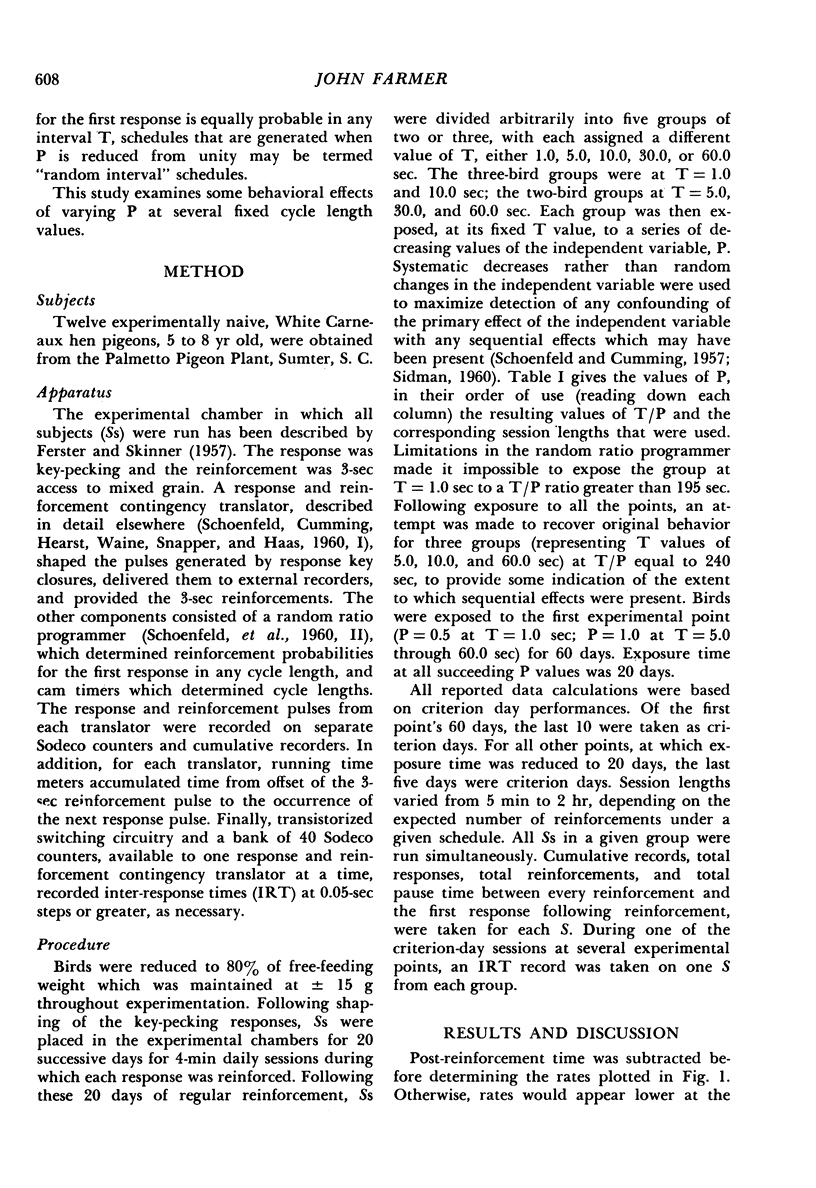
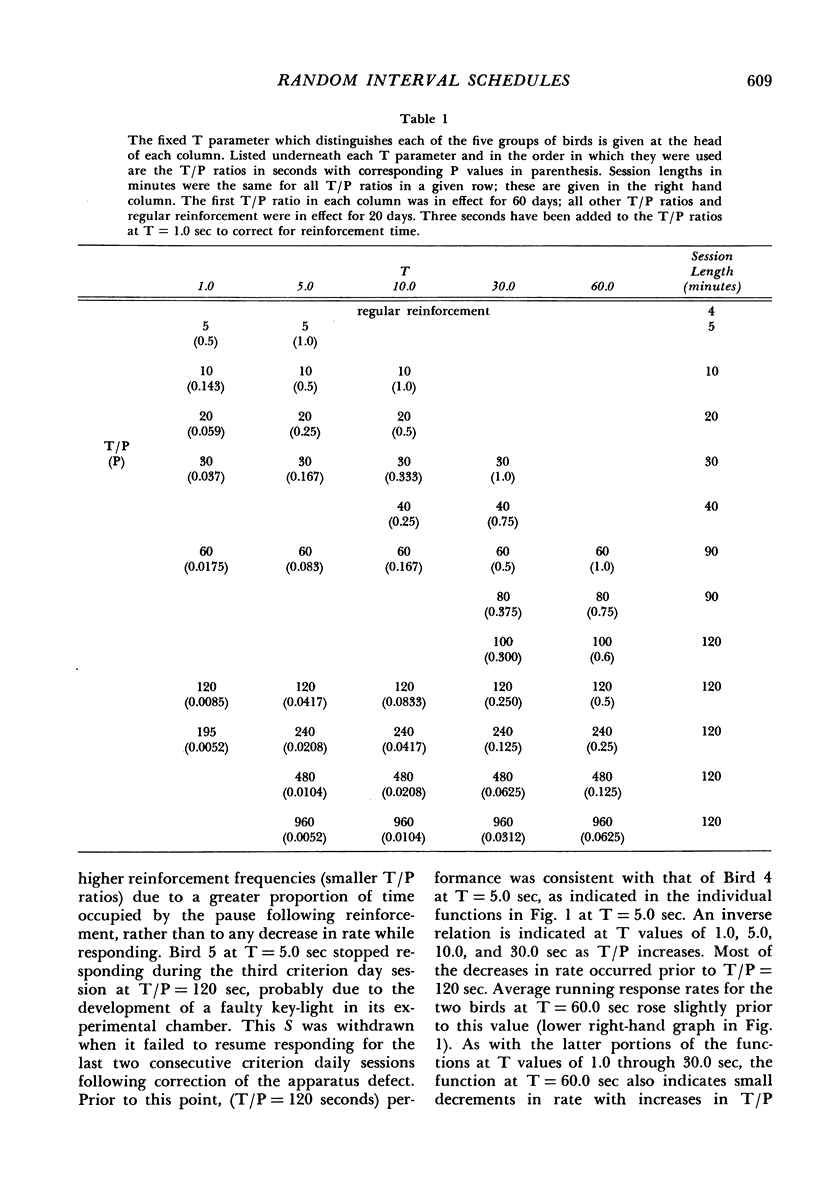

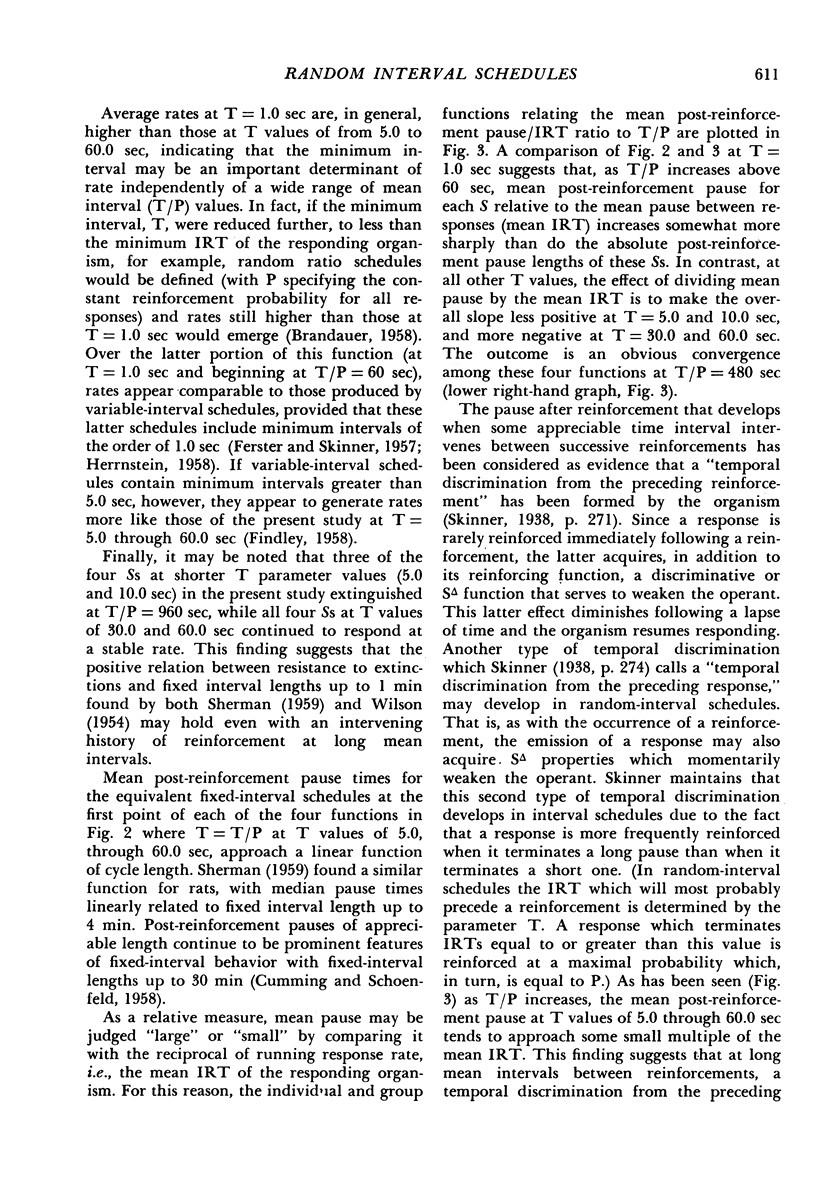
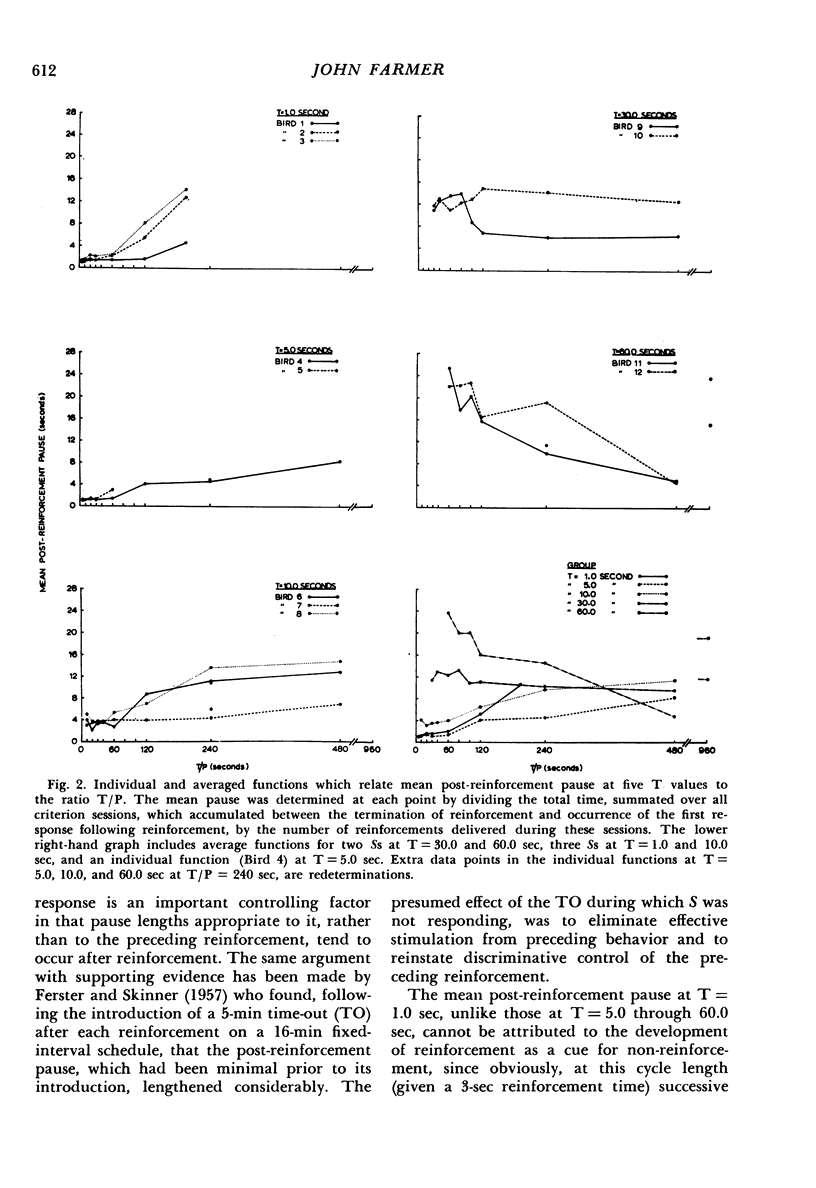



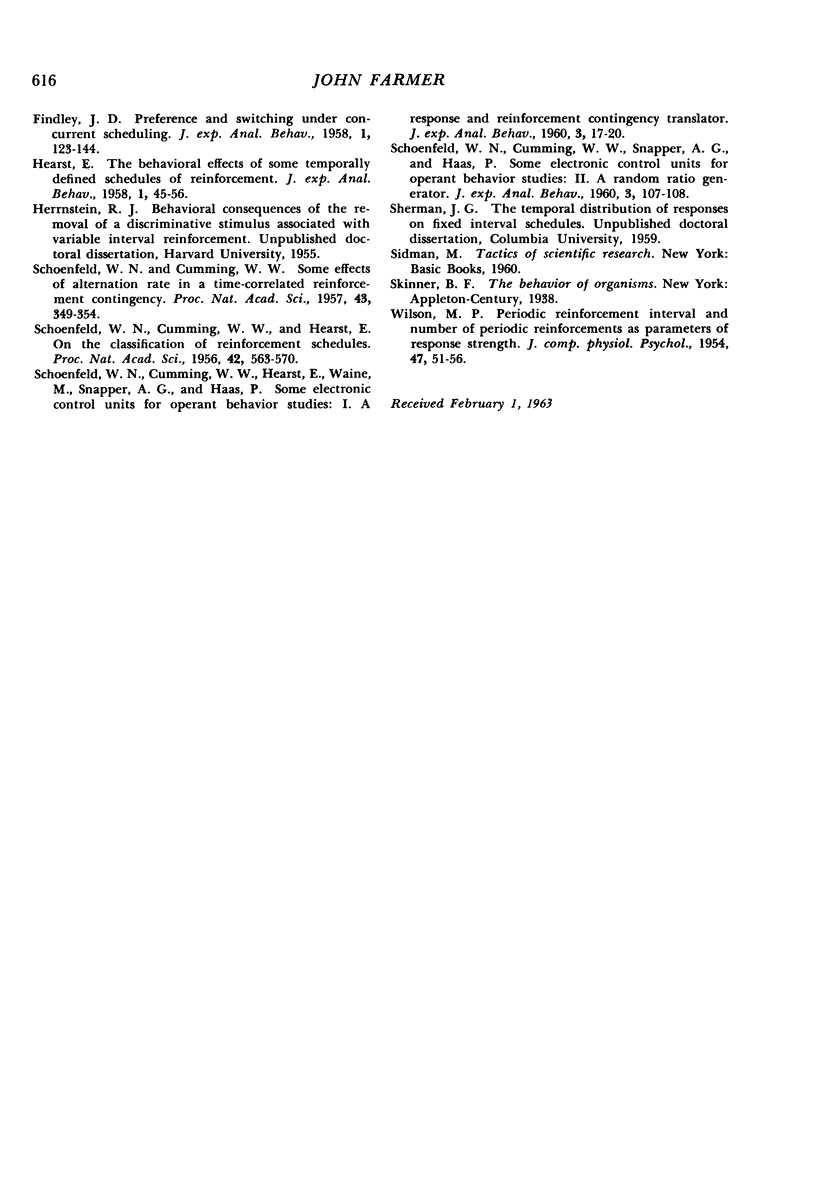
Selected References
These references are in PubMed. This may not be the complete list of references from this article.
- Clark R. Some time-correlated reinforcement schedules and their effects on behavior. J Exp Anal Behav. 1959 Jan;2(1):1–22. doi: 10.1901/jeab.1959.2-1. [DOI] [PMC free article] [PubMed] [Google Scholar]
- Cumming W. W., Schoenfeld W. N. Behavior under extended exposure to a high-value fixed interval reinforcement schedule. J Exp Anal Behav. 1958 Aug;1(3):245–263. doi: 10.1901/jeab.1958.1-245. [DOI] [PMC free article] [PubMed] [Google Scholar]
- Findley J. D. Preference and Switching under Concurrent Scheduling. J Exp Anal Behav. 1958 Apr;1(2):123–144. doi: 10.1901/jeab.1958.1-123. [DOI] [PMC free article] [PubMed] [Google Scholar]
- HEARST E. The behavioral effects of some temporally defined schedules of reinforcement. J Exp Anal Behav. 1958 Jan;1:45–55. doi: 10.1901/jeab.1958.1-45. [DOI] [PMC free article] [PubMed] [Google Scholar]
- SCHOENFELD W. N., CUMMING W. W., SNAPPER A. G., HAAS P. Some electronic control units for operant behavior studies. II. A random ratio generator. J Exp Anal Behav. 1960 Apr;3:107–108. doi: 10.1901/jeab.1960.3-107. [DOI] [PMC free article] [PubMed] [Google Scholar]
- Schoenfeld W. N., Cumming W. W., Hearst E. ON THE CLASSIFICATION OF REINFORCEMENT SCHEDULES. Proc Natl Acad Sci U S A. 1956 Aug;42(8):563–570. doi: 10.1073/pnas.42.8.563. [DOI] [PMC free article] [PubMed] [Google Scholar]
- Schoenfeld W. N., Cumming W. W., Hearst E., Waine M., Snapper A. G., Haas P. Some Electronic Control Units for Operant Behavior Studies: I. A Response and Reinforcement Contingency Translator. J Exp Anal Behav. 1960 Jan;3(1):17–20. doi: 10.1901/jeab.1960.3-17. [DOI] [PMC free article] [PubMed] [Google Scholar]
- Schoenfeld W. N., Cumming W. W. SOME EFFECTS OF ALTERNATION RATE IN A TIME-CORRELATED REINFORCEMENT CONTINGENCY. Proc Natl Acad Sci U S A. 1957 Apr 15;43(4):349–354. doi: 10.1073/pnas.43.4.349. [DOI] [PMC free article] [PubMed] [Google Scholar]
- WILSON M. P. Periodic reinforcement interval and number of periodic reinforcements as parameters of response strength. J Comp Physiol Psychol. 1954 Feb;47(1):51–56. doi: 10.1037/h0057224. [DOI] [PubMed] [Google Scholar]


